Mapping the Behavioral Signatures of Shank3b Mice in Both Sexes
- PMID: 38900384
- PMCID: PMC11365888
- DOI: 10.1007/s12264-024-01237-8
Mapping the Behavioral Signatures of Shank3b Mice in Both Sexes
Abstract
Autism spectrum disorders (ASD) are characterized by social and repetitive abnormalities. Although the ASD mouse model with Shank3b mutations is widely used in ASD research, the behavioral phenotype of this model has not been fully elucidated. Here, a 3D-motion capture system and linear discriminant analysis were used to comprehensively record and analyze the behavioral patterns of male and female Shank3b mutant mice. It was found that both sexes replicated the core and accompanied symptoms of ASD, with significant sex differences. Further, Shank3b heterozygous knockout mice exhibited distinct autistic behaviors, that were significantly different from those those observed in the wild type and homozygous knockout groups. Our findings provide evidence for the inclusion of both sexes and experimental approaches to efficiently characterize heterozygous transgenic models, which are more clinically relevant in autistic studies.
Keywords: Shank3b; 3D animal motion-capture system; Autism; Computational ethology; Sex differences; Spontaneous behavior.
© 2024. The Author(s).
Conflict of interest statement
All authors claim that there are no conflicts of interest.
Figures
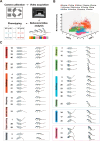
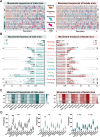
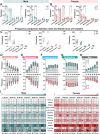
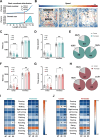
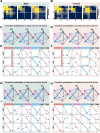
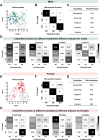
Similar articles
-
Autism-like phenotype across the lifespan of Shank3B-mutant mice of both sexes.J Neurodev Disord. 2025 Aug 2;17(1):45. doi: 10.1186/s11689-025-09635-3. J Neurodev Disord. 2025. PMID: 40753218 Free PMC article.
-
Altered sex differences related to food intake, hedonic preference, and FosB/deltaFosB expression within central neural circuit involved in homeostatic and hedonic food intake regulation in Shank3B mouse model of autism spectrum disorder.Neurochem Int. 2024 Dec;181:105895. doi: 10.1016/j.neuint.2024.105895. Epub 2024 Oct 24. Neurochem Int. 2024. PMID: 39461669
-
Replicable in vivo physiological and behavioral phenotypes of the Shank3B null mutant mouse model of autism.Mol Autism. 2017 Jun 15;8:26. doi: 10.1186/s13229-017-0142-z. eCollection 2017. Mol Autism. 2017. PMID: 28638591 Free PMC article.
-
Behavioral phenotypes and neurobiological mechanisms in the Shank1 mouse model for autism spectrum disorder: A translational perspective.Behav Brain Res. 2018 Oct 15;352:46-61. doi: 10.1016/j.bbr.2017.09.038. Epub 2017 Sep 28. Behav Brain Res. 2018. PMID: 28963042 Review.
-
Animal models of autism spectrum disorder (ASD): a synaptic-level approach to autistic-like behavior in mice.Exp Anim. 2013;62(2):71-8. doi: 10.1538/expanim.62.71. Exp Anim. 2013. PMID: 23615300 Review.
Cited by
-
Age-dependent cortical overconnectivity in Shank3 mice is reversed by anesthesia.Transl Psychiatry. 2025 Apr 19;15(1):154. doi: 10.1038/s41398-025-03377-5. Transl Psychiatry. 2025. PMID: 40253406 Free PMC article.
-
Large-scale EM data reveals myelinated axonal changes and altered connectivity in the corpus callosum of an autism mouse model.Front Neuroinform. 2025 Apr 11;19:1563799. doi: 10.3389/fninf.2025.1563799. eCollection 2025. Front Neuroinform. 2025. PMID: 40290520 Free PMC article.
References
-
- Battle DE. Diagnostic and statistical manual of mental disorders (DSM). CoDAS 2013, 25: 191–192. - PubMed
-
- Maenner MJ, Shaw KA, Bakian AV, Bilder DA, Durkin MS, Esler A, et al. Prevalence and characteristics of autism spectrum disorder among children aged 8 years - autism and developmental disabilities monitoring network, 11 sites, United States, 2018. MMWR Surveill Summ 2021, 70: 1–16. 10.15585/mmwr.ss7011a1 - DOI - PMC - PubMed
MeSH terms
Substances
LinkOut - more resources
Full Text Sources
Medical

